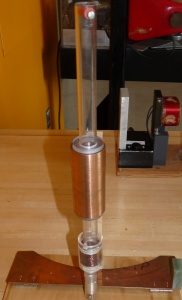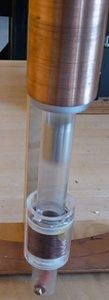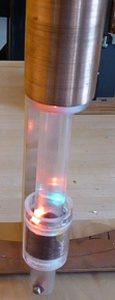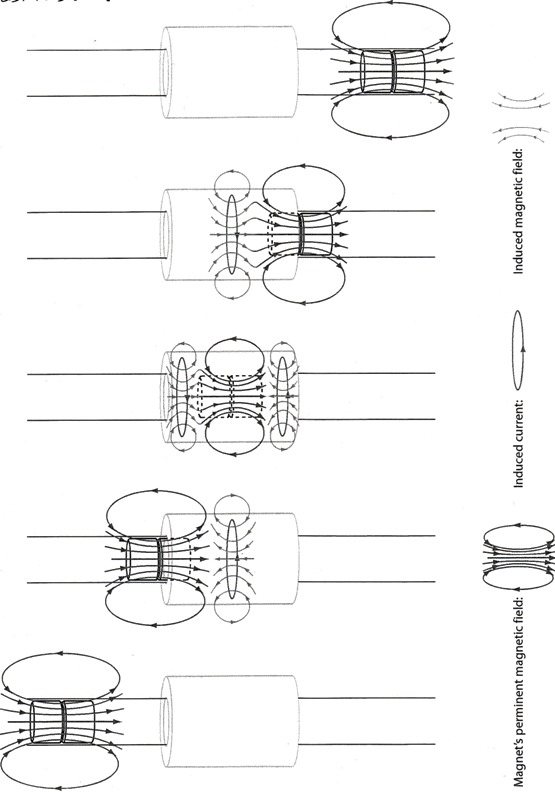 |
 |

This display shows the interaction of a moving magnet with a non-magnetic electrically conducting material.
Begin with the brown coil at the bottom. Turn the plastic tube upside down. Watch the cylindrical magnet pass through the brown coil and then through the fat copper collar. Turn the tube right side up, and watch the magnet fall through in the opposite direction.
The magnet will fall quickly through open space and slowly through the thick copper collar. When the magnet passes through the brown coil near one end of the tube, the red and green lights will flash one after the other. When the magnet passes through in the opposite direction, the lights will flash in the opposite order.
Why?
Lenz’s Law says:
When the flux of the magnetic field through a coil is changed, a current will be induced in such a direction as to oppose the change in the applied field.
The strength of the magnetic field depends on distance: the magnetic field is strongest near the magnet ends and weaker farther away. As the magnet enters the copper collar (you may think of the collar as a lot of coils stacked on top of each other) it induces currents in the copper. These currents produce magnetic fields. The induced fields produce forces on the magnet and retard its motion. Because copper is not a perfect conductor, these charges slow down, their field weakens, allowing the magnet to slowly pass through.
When the magnet enters the brown coil it induces a current in the thin wire. When the magnets exits the coil the induced current is in the opposite direction. Two Light Emitting Diodes are connected so as to show the direction of the currents.
Energy is dissipated as heat in the copper collar, and as light in the brown coil.
